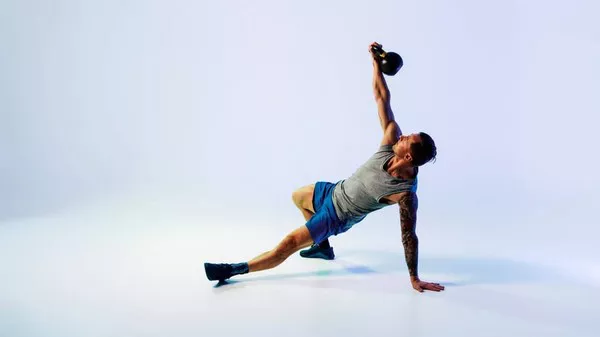In the pursuit of achieving a slimmer and more defined facial appearance, many individuals turn to various methods, including diet, exercise, and cosmetic procedures. While spot reduction – the notion of targeting fat loss in specific areas of the body – is a debated topic in the realm of fitness, incorporating cardiovascular exercise into your routine can contribute to overall weight loss, potentially leading to a reduction in face fat. However, determining the optimal amount of cardio to target this specific area requires a nuanced understanding of the factors at play. In this article, we delve into the science behind facial fat loss and explore how cardio can be an effective tool in achieving your aesthetic goals.
Understanding Facial Fat: The Basics
Before diving into the specifics of cardio for face fat loss, it’s essential to grasp the fundamentals of facial fat distribution and its relation to overall body composition. The face, like the rest of the body, contains adipose tissue (fat), which varies in distribution and thickness among individuals. Genetics, age, gender, and lifestyle factors all influence the distribution of fat in the face.
While it’s not possible to spot-reduce fat in a particular area of the body through exercise alone, consistent cardio exercise can contribute to overall weight loss, which may include a reduction in facial fat over time. However, the rate and extent of fat loss in the face will vary from person to person.
The Role of Cardiovascular Exercise in Fat Loss
Cardiovascular exercise, often referred to as cardio, encompasses a range of activities that elevate the heart rate and increase calorie expenditure. Examples include running, cycling, swimming, and brisk walking. When performed regularly and coupled with a balanced diet, cardio can promote weight loss by creating a calorie deficit – that is, burning more calories than consumed.
While cardio primarily targets body fat as a fuel source, the specific areas from which fat is mobilized for energy are influenced by factors such as genetics and hormonal regulation. Consequently, individuals may experience variations in fat loss patterns, including the reduction of facial fat, based on their unique physiology.
Determining the Optimal Cardio Routine
The American Heart Association recommends at least 150 minutes of moderate-intensity aerobic activity or 75 minutes of vigorous-intensity aerobic activity per week for overall health and fitness benefits. However, when the goal is targeted fat loss, such as reducing face fat, additional considerations come into play.
Frequency: Aim for a consistent cardio routine, ideally incorporating sessions most days of the week. This consistent effort helps create a sustained calorie deficit, which is essential for fat loss.
Intensity: While both moderate and vigorous-intensity cardio can contribute to calorie expenditure, higher-intensity activities may lead to greater calorie burn in a shorter amount of time. Incorporating intervals of high-intensity exercise, such as sprinting or high-intensity interval training (HIIT), can maximize calorie expenditure and promote fat loss.
Duration: The duration of cardio sessions can vary based on individual fitness levels, preferences, and time constraints. Aim for sessions lasting 30 minutes to an hour, depending on the intensity of the activity and your overall fitness goals.
Variety: Incorporating a variety of cardio activities not only keeps workouts engaging but also challenges different muscle groups and energy systems. Mix up your routine with activities like cycling, swimming, dancing, or hiking to maximize fat-burning potential.
Consistency: Consistency is key when it comes to seeing results from cardio exercise. Make cardio a regular part of your routine and aim to gradually increase the duration or intensity over time as your fitness improves.
Additional Strategies for Facial Fat Loss
While cardio exercise plays a crucial role in overall weight loss, including the reduction of facial fat, combining it with other strategies can enhance results and promote a more toned and sculpted appearance:
Strength Training: Incorporating resistance training exercises, such as weightlifting or bodyweight exercises, can help build muscle mass and increase metabolic rate, contributing to overall fat loss. Additionally, strengthening facial muscles through targeted exercises, such as facial yoga or resistance training with facial muscle bands, may help improve facial tone and definition.
Hydration and Nutrition: Staying hydrated and following a balanced diet rich in whole foods, lean proteins, fruits, and vegetables is essential for supporting fat loss efforts and overall health. Limiting processed foods, sugary beverages, and excessive sodium intake can help reduce bloating and water retention, enhancing facial definition.
Stress Management: Chronic stress can contribute to weight gain and retention of visceral fat, including facial fat. Incorporating stress-reducing practices such as meditation, yoga, or deep breathing exercises can help promote overall well-being and support fat loss efforts.
Facial Massage and Lymphatic Drainage: Gentle facial massage techniques and lymphatic drainage exercises may help improve circulation, reduce fluid retention, and promote lymphatic flow, potentially aiding in the reduction of facial puffiness and bloating.
Consistency and Patience: Achieving significant fat loss, including in the face, requires consistency, patience, and a holistic approach that addresses lifestyle factors beyond exercise alone. Set realistic goals, stay committed to your routine, and celebrate progress along the way.
Conclusion: Strive for Balance and Consistency
While there is no one-size-fits-all approach to losing face fat, incorporating a balanced cardio routine, along with complementary strategies such as strength training, nutrition, and stress management, can contribute to overall fat loss and facial toning. Remember that individual results may vary, and achieving sustainable changes takes time, consistency, and a holistic approach to health and wellness. By prioritizing regular exercise, healthy eating habits, and self-care practices, you can work towards achieving your aesthetic goals while supporting your overall well-being. So lace up those running shoes, hit the pavement, and embrace the journey towards a healthier, more confident you.
[inline_related_posts title=”You Might Be Interested In” title_align=”left” style=”list” number=”6″ align=”none” ids=”8756,8752,8747″ by=”categories” orderby=”rand” order=”DESC” hide_thumb=”no” thumb_right=”no” views=”no” date=”yes” grid_columns=”2″ post_type=”” tax=””]






























